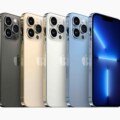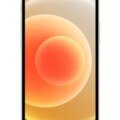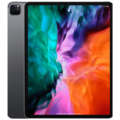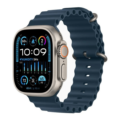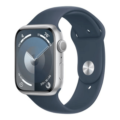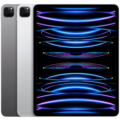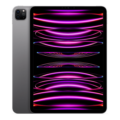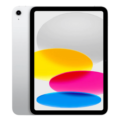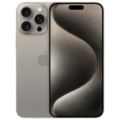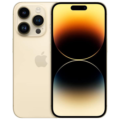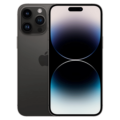- Home
- Apple Devices
- Apple iPad
- Apple iPad mini 4 (2015) full specifications
Apple iPad mini 4 (2015) full specifications
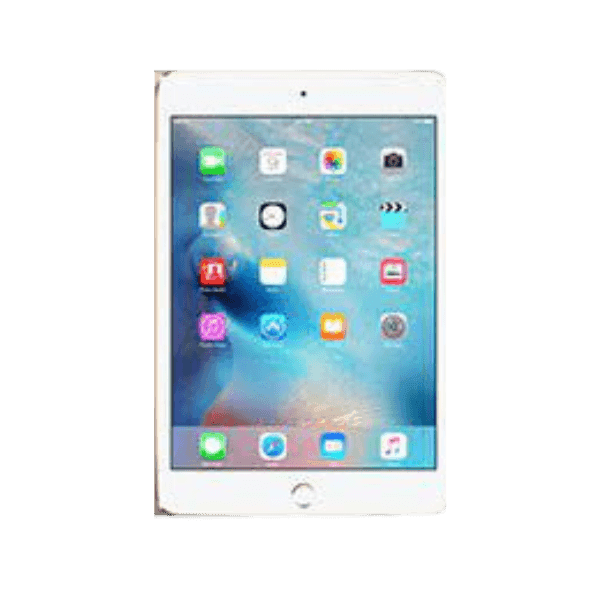
SPECIFICATIONS
General
| Status | Discontinued |
| Announced | 2015, September |
| Released | 25 September, 2025 |
| Model |
A1538, A1550, iPad5,1, iPad5,2 |
| Price Apple iPhone Price in USA, UK, Canada, Australia, India, Pakistan, China, Japan and Europe |
EUR 360 USD 392 |
Network
| Technology |
GSM / CDMA / HSPA / EVDO / LTE |
| 2G Network | GSM 850 / 900 / 1800 / 1900 CDMA 800 / 1900 |
| 3G Network | HSDPA 850 / 900 / 1700 / 1900 / 2100 CDMA2000 1xEV-DO |
| 4G Network |
1, 2, 3, 4, 5, 7, 8, 13, 17, 18, 19, 20, 25, 26, 28, 29, 38, 39, 40, 41 - A1490 |
| Speed | HSPA 42.2/5.76 Mbps, LTE-A Cat4 150/50 Mbps, EV-DO Rev.A 3.1 Mbps |
| GPRS GPRS (General Packet Radio Service) is a packet oriented mobile data service on the 2G and 3G cellular communication system's global system for mobile communications (GSM), Generally, GPRS is used for the purpose of wireless data transfer, such as sharing pictures and videos or browsing the Internet via a mobile phone connection. | |
| EDGE EDGE (Enhanced Data GSM Environment) is a wireless network technology generally considered the next step in the 2G network offers data transfer rates up to four times faster than ordinary GSM networks, Generally, EDGE is used for the purpose of wireless data transfer, such as sharing pictures and videos or browsing the Internet via a mobile phone connection. |
Body
| Dimensions | 203.2 x 134.8 x 6.1 mm (8.0 x 5.31 x 0.24 in) |
| Weight | 299 g (Wi-Fi) / 304 g (3G/LTE) (10.55 oz) |
| Colors |
Space Gray, Silver, Gold |
| SIM SIM (Subscriber Identity Module) is a small card that contains mobile network subscriber's account information. This allows the phone using the card to attach to a mobile network. The SIM card is most commonly associated with GSM and UMTS mobile networks. Moving a SIM card from one phone to another allows a subscriber to switch mobile phones without having to contact their mobile network carrier. SIM cards can also be used by a phone to store limited amounts of data, such as phone numbers and text messages. |
Nano-SIM and eSIM |
| Build | Glass front, aluminum back, aluminum frame |
Display
| Display Type Display Technology => A number of display technologies and types used in mobile phones => TFT (Thin Film Transistor), IPS (In-Place Switching), OLED (Organic Light Emitting Diode), AMOLED (Active-Matrix Organic Light-Emitting Diode), Super AMOLED (an even advanced version of AMOLED), Resistive Touchscreen (Resistive touchscreens contain two layer of conductive material with a very small gap between them which acts as a resistance), Capacitive Touchsceen (Capacitive touchscreen technology consists of a layer of glass coated with a transparent conductor) | IPS LCD |
| Size | 7.9 inches, 193.3 cm2 (~70.6% screen-to-body ratio) |
| Resolution | 1536 x 2048 pixels, 4:3 ratio |
| Pixel Density Pixel Density (PPI) is refers to the concentration of pixels on a particular display, measured in pixels per inch (ppi). Pixel density is calculated by dividing the diagonal pixel resolution of a display by its diagonal size, higher pixel density better display quality. | (~324 ppi density) |
| Touch Screen | Haptic Touch |
| Display Protection Display Protection => Gorilla Glass is a special alkali-aluminosilicate glass shield with exceptional damage resistance that helps protect mobile displays from scratches, drops, and bumps of everyday use, It is always better to go for a smartphone with Gorilla Glass for that added protection and peace of mind. | Scratch-resistant glass, oleophobic coating |
| Multitouch |
Camera
| Primary Camera is able to capture photographs and usually videos, The most important characteristics of a camera are the resolution (measured in megapixels), lens focus type (fixed or automatic), higher megapixel cameras are known to capture higher quality photos, but not always a good measurement of the photos quality. |
8 MP, f/2.4, 32mm (standard), 1.12µm, AF |
| Video | 720p@30fps |
| Camera Features | HDR |
| Selfie Camera |
1.2 MP, f/2.2, 31mm (standard) |
| Video | 720p@30fps |
| Camera Features | HDR |
Hardware
| Chipset Chipset is a group of integrated circuits designed to perform one or a more dedicated functions, often with real time computing constraints, Popular smartphones are equipped with more advanced embedded chipsets that can do many different tasks depending on their programming. | Apple A8 (20 nm) |
| CPU CPU (Central Processing Unit) mostly known as processors, CPU processes instructions in order to carry out certain functions that make your device operate properly. Processors are often described as the brain of computers, smartphones and tablets, Smartphones and tablets rely on processors to carry out their every task, Processors are an incredibly important factor in selecting any type of computing device, including your smartphone. | Dual-core 1.5 GHz Typhoon |
| GPU GPU (Graphics Processing Unit) is a single-chip processor designed to rapidly manipulate and alter memory to accelerate the creation of images in a frame buffer intended for output to a display, This includes things such as lighting effects, object transformations, and 3D motion. | PowerVR GX6450 (quad-core graphics) |
| RAM (Memory) RAM (Random Access Memory) is a type of computer memory that can be accessed randomly, any byte of memory can be accessed without touching the preceding bytes that allows information to be stored and accessed quickly from random locations. RAM is the most common type of memory found in computer systems, smartphones, tablets and other electronic devices. | 2 GB |
| Internal Storage Internal Storage is a data storage space (flash memory) mostly used in smartphones, tablets and other electronic devices where operating system, apps, music, photos, videos, files and other user data Is stored. | 16GB/32GB/64GB/128GB |
| Card Slot Memory Card Slot is a special slot for inserting a memory card. Memory cards allow you to expand the phone's built-in memory, A memory card (sometimes called a flash memory card or a storage card) is a small storage medium used to store data such as text, pictures, audio, and video, for use on small, portable or remote computing devices such as mobile phones, mp3 players, digital cameras. | No |
| Sensors Sensors are electronic components that detects and responds to some type of input from the physical environment. The specific input could be light, heat, motion, moisture, pressure and location, The output is generally a signal that is converted to use in computing systems, a location sensor, such as a GPS receiver is able to detect current location of your electronic device. |
Fingerprint (front-mounted), accelerometer, gyro, compass, barometer |
Software
| Operating System OS => Every computer system run on a base software called Operating System (OS). Operating System controls all basic operations of the computer (such as smartphone, PDAs, tablet computers and other handheld devices). The Operating System allows the user to install and run third party applications (apps), apps are used to add new functionality to the device. | iOS 9, upgradable to iPadOS 15.8.1 |
| Browser (Default) | Safari |
Media
| Loudspeaker | Yes, with stereo speakers |
| 3.5mm Jack | |
| FM Radio | No |
Connectivity
| Bluetooth Bluetooth is a wireless communications technology for exchanging data between mobile phones, headsets, computers and other network devices over short distances without wires, Bluetooth technology was primarily designed to support simple wireless networking of personal consumer devices. | 4.0, A2DP, EDR |
| Infrared Infrared connectivity is an old wireless technology used to connect two electronic devices. It uses a beam of infrared light to transmit information and so requires direct line of sight and operates only at close range. | |
| Wi-fi Wi-Fi is a popular wireless networking technology using radio waves to provide high-speed network connections that allows devices to communicate without cords or cables, Wi-Fi is increasingly becoming the preferred mode of internet connectivity all over the world. | Wi-Fi 802.11 a/b/g/n/ac, dual-band, hotspot |
| Wi-fi Hotspot | |
| USB | Lightning, USB 2.0 |
| NFC NFC (Near field communication) is a set of standards for smartphones and similar devices to establish peer-to-peer radio communications with each other by touching them together or bringing them into proximity, usually no more than a few inches. |
Battery
| Battery Type Battery Type => Cell phones run on various kinds of batteries depending on the manufacturer, phone size or shape and features. There are basically four types of cell phone batteries => Lithium Polymer, Lithium Ion, Nickel Metal Hydride and Nickel Cadmium. | Li-Po |
| Capacity Battery Capacity is a measure (typically in Amp-hr) of the charge stored by the battery, and is determined by the mass of active material contained in the battery. The battery capacity represents the maximum amount of energy that can be extracted from the battery under certain conditions. | 5124 mAh |
| Placement | Non-removable |
| Wireless Charging Wireless Charging (Inductive Charging) uses an electromagnetic field to transfer energy between two objects. This is usually done with a charging station. Energy is sent through an inductive coupling to an electrical device, which can then use that energy to charge batteries or run the device. | Unknown |
| Talk Time Talk Time is the longest time that a single battery charge will last when you are constantly talking on the phone under perfect conditions, Ambient temperature and highly dependent on the cellular network environment such as the distance to the closest cell network tower. | Up to 10 h (multimedia) |
MISC
Description
Released in September 2015, the Apple iPad Mini 4 spec is a compact tablet that packed a punch during its time. Though discontinued now, it still holds relevance for those seeking a lightweight, portable device. Let’s dive into its features, design, performance, and user experience in this full review.
Table of Contents
Design and Build Quality

The iPad Mini 4 features a sleek and lightweight design. It measures 203.2 x 134.8 x 6.1 mm (8.0 x 5.31 x 0.24 inches) and weighs 299g (Wi-Fi) or 304g (3G/LTE). Its ultra-thin aluminum frame and glass front make it feel premium.
Key Design Features
- Slim and lightweight: At just 6.1 mm thickness, it’s easy to hold for extended periods.
- Build materials: glass front, aluminum back, and aluminum frame add durability.
- Color options: Available in Space Gray, Silver, and Gold.
- SIM support: Nano-SIM and eSIM options (3G/LTE models only).
The compact design makes it ideal for travel, reading, or light work.
Apple iPad mini 4 spec Display

The iPad Mini 4 comes with a 7.9-inch IPS LCD. Its resolution is 1536 x 2048 pixels with a pixel density of approximately 324 PPI. The screen-to-body ratio is ~70.6%, which is impressive for its size.
Display Features
- Sharp visuals: The high pixel density ensures crisp images and text.
- Scratch resistance: The screen is protected by scratch-resistant glass and an oleophobic coating to reduce fingerprints.
- Aspect ratio: The 4:3 ratio makes it great for reading and web browsing but less suited for widescreen video content.
Performance

Powered by the Apple A8 chipset built on a 20nm process, the iPad Mini 4 offers solid performance. Its dual-core 1.5 GHz Typhoon CPU and PowerVR GX6450 quad-core GPU ensure smooth multitasking and decent gaming.
Performance Highlights
- Operating System: Initially launched with iOS 9, it is upgradable to iPadOS 15.8.1, giving access to the latest apps and security updates.
- RAM and storage: 2GB of RAM with storage options of 16GB, 32GB, 64GB, and 128GB. However, the lack of a microSD slot limits expandability.
For everyday tasks like browsing, video streaming, and light productivity, the iPad Mini 4 performs admirably.
Camera Quality
Rear Camera
The Apple iPad Mini 4 spec features a single 8 MP camera with an f/2.4 aperture and 1.12µm pixel size. It supports autofocus and basic HDR.
- Resolution: 1080p at 30fps video recording.
- Photo quality: adequate for casual photography but lacks modern camera advancements.
Front Camera
The front-facing 1.2 MP camera is basic and supports 720p video recording. It’s sufficient for FaceTime calls but not ideal for high-quality selfies.
Apple iPad mini 4 spec Battery Life

The Apple iPad Mini 4 spec houses a Li-Ion 5124 mAh battery (19.1 Wh). Apple claims it offers up to 10 hours of multimedia usage, which holds under moderate use.
Charging
- Connector: Lightning port (USB 2.0).
- No fast charging: charging times are relatively slow compared to modern devices.
The battery life remains a strong point, especially for light to moderate users.
Audio and Multimedia
Equipped with stereo speakers, the iPad Mini 4 provides clear and balanced audio. It also includes a 3.5mm headphone jack, which is increasingly rare in modern devices.
Multimedia Features
- Loudspeakers: Good sound quality for a device this size.
- Display performance: excellent for eBooks, streaming, and casual gaming.
Connectivity
The iPad Mini 4 supports a wide range of connectivity options:
- Wi-Fi: 802.11 a/b/g/n/ac with dual-band support.
- Bluetooth: Version 4.0 with A2DP and EDR.
- GPS: Available on 3G/LTE models.
- USB: Lightning port for charging and data transfer.
Missing Features
- NFC and radio: not included.
- USB-C: Absent, as Lightning was standard for Apple devices at the time.
Sensors and Security
The iPad Mini 4 includes several useful sensors:
- Fingerprint scanner: front-mounted Touch ID for secure authentication.
- Accelerometer, gyro, compass, and barometer: Enhance functionality in apps and games.
Touch ID remains fast and reliable even by today’s standards.
Software Support
Initially launched with iOS 9, the iPad Mini 4 supports updates up to iPadOS 15.8.1. This ensures compatibility with most modern apps, although some high-performance apps may struggle.
Pricing and Availability
At launch, the iPad Mini 4 was priced around 360 EUR. It’s now discontinued, but refurbished models are available online at much lower prices.
Pros and Cons
Pros
- Slim and lightweight design.
- High-quality IPS LCD.
- Long battery life.
- Reliable software updates up to iPadOS 15.8.1.
Cons
- No microSD card slot.
- Outdated performance by modern standards.
- Basic camera features.
Conclusion
The Apple iPad Mini 4 spec remains a solid choice for users seeking a compact and reliable tablet. While its performance may not match today’s standards, its premium design, sharp display, and long battery life make it a worthwhile option for casual use. Whether you’re reading, browsing, or streaming, the iPad Mini 4 delivers a satisfying experience even years after its release.
